Blood spatter.
Gunshot trajectory.
A maggot kit.
It wasn’t your typical morning class at Sycamore Junior High in Anaheim.
But on April 7, a room of eighth-graders listened intently as Jeannette Torres, a forensic specialist with the Anaheim Police Department, gave a detailed overview of life as a CSI technician.
The 50-minute class included a slide show and tour of a white, unmarked vehicle APD forensic specialists use to roll to routine crime scenes.
“We have another unit that we use for major crimes such as homicides or officer-involved shootings,” Torres explained to students in Dayna Whitman’s Business Administration class.
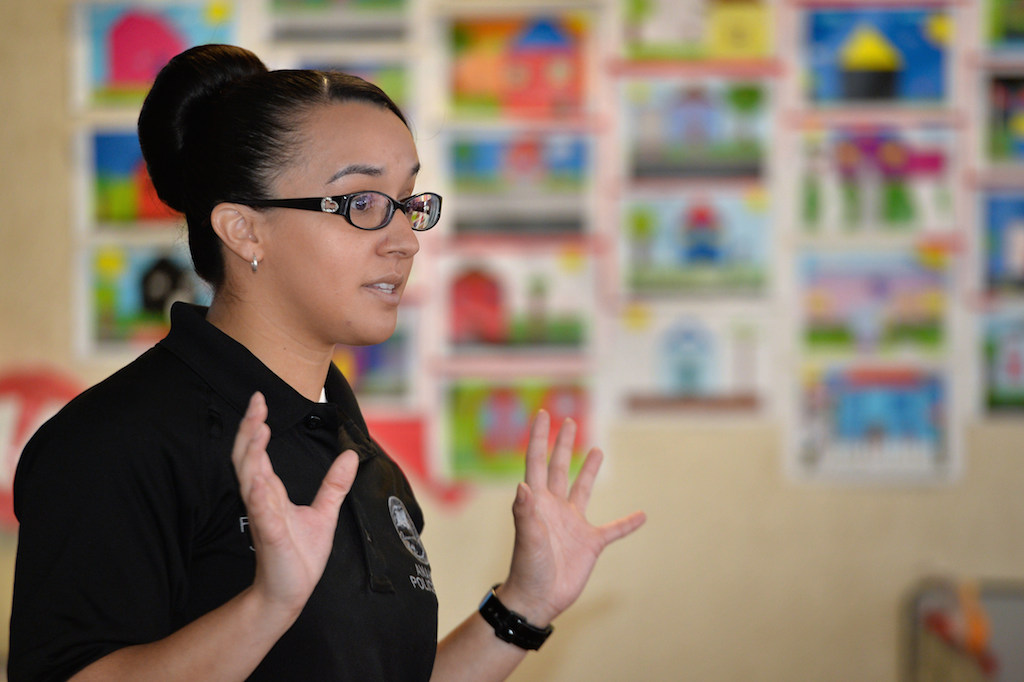
Forensic Specialist Jeannette Torres of the Anaheim PD talks to an eighth-grade class at Sycamore Junior High about a career in forensics.
Photo by Steven Georges/Behind the Badge OC
“We call that vehicle the BAT, for Big Awful Truck,” she said. “It’s hard to drive.”
The presentation last week is part of a career exploration class only offered at Sycamore for now but one that Anaheim police, fire and school district officials hope to expand to junior high schools throughout the city.
Called the Public Safety Pathways Program, the weekly class includes visits to Sycamore by Anaheim police and fire personnel, as well as tours of the police department and a training facility used by Anaheim Fire & Rescue and other firefighting agencies.
The purpose of the Public Safety Pathways Program is to expose youngsters to career possibilities in the public safety field. In addition to careers as police officers and firefighters, the program exposes students to such specialties as forensics, dispatch, traffic, crime, emergency response and fire prevention.
Forensic specialists are civilian positions that require a four-year college degree, preferably in chemistry, biochemistry, physics or another “hard science,” Torres told the Sycamore students.
Certifications also help a candidate get into the highly competitive field of CSI, Torres said.
Torres, 25, earned a bachelor’s degree in criminal justice from Cal State Fullerton and went on to earn a certification in forensic science and crime analysis from Cal State Long Beach.

Students in the Public Safety Pathways Program at Sycamore Junior High listen to Torres during a slide-show presentation April 7.
Photo by Steven Georges/Behind the Badge OC
She started as a cadet at the Anaheim PD four years ago and became a forensic specialist nine months ago, joining a team headed by Mark Sveinson, supervisor of the Forensic Services Detail, Investigations Division, APD.
Sveinson, Torres and Cristy Medina, another APD forensic specialist, participated in the April 7 instruction and demonstration.
Students learned about what goes into processing crime scenes — from petty theft to homicides.
The work of a forensic specialist includes using powders and chemicals to detect latent fingerprints left at a crime scene, and looking for a hair follicle, nail clipping, shoe impression — anything that may lead to the identity of a suspect or suspects.
Office duties include lab work, diagramming crime scenes, booking evidence and writing reports.
It’s a 24/7 job that requires a strong stomach, Torres said.
Blood.
Saliva.
Other bodily fluids.
Forensic specialists see it all, Torres said.
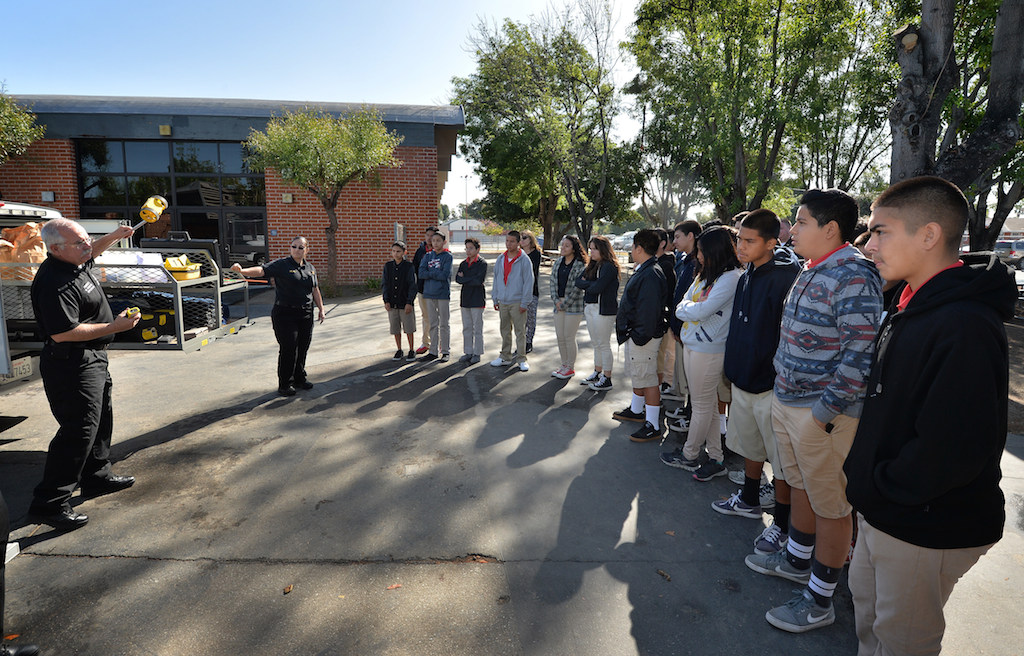
Anaheim PD Forensic Services Detail Supervisor Mark Sveinson shows students at Sycamore Junior High some tools his team uses to gather evidence at crime scenes.
Photo by Steven Georges/Behind the Badge OC
She explained to students how CSI in real life is different from TV and the movies.
It can take several weeks or months to process evidence such as DNA and not minutes, as is typically portrayed on TV shows and on the big screen, Torres said.
She got some chuckles from the eighth-graders when she showed them a scene from TV of a CSI specialist working in a dark indoor crime scene.
“We know where the light switches are,” Torres said.
After the classroom demonstration, students headed outside to tour the forensic vehicle.
They got a close-up look at a maggot kit, which is used to determine time of death. Maggots taken from corpses are preserved in alcohol to be taken back to a lab for analysis.
They also handled trajectory rods used to determine the path of a bullet and learned about numbered, yellow-and-black placards used to mark evidence at crime scenes.
The students seemed to be engaged and impressed.
“It was good,” said Gabriel Camarillo, 13, who said he would love to become a police detective.
“How they collect all the evidence, like a fingerprint, is cool.”
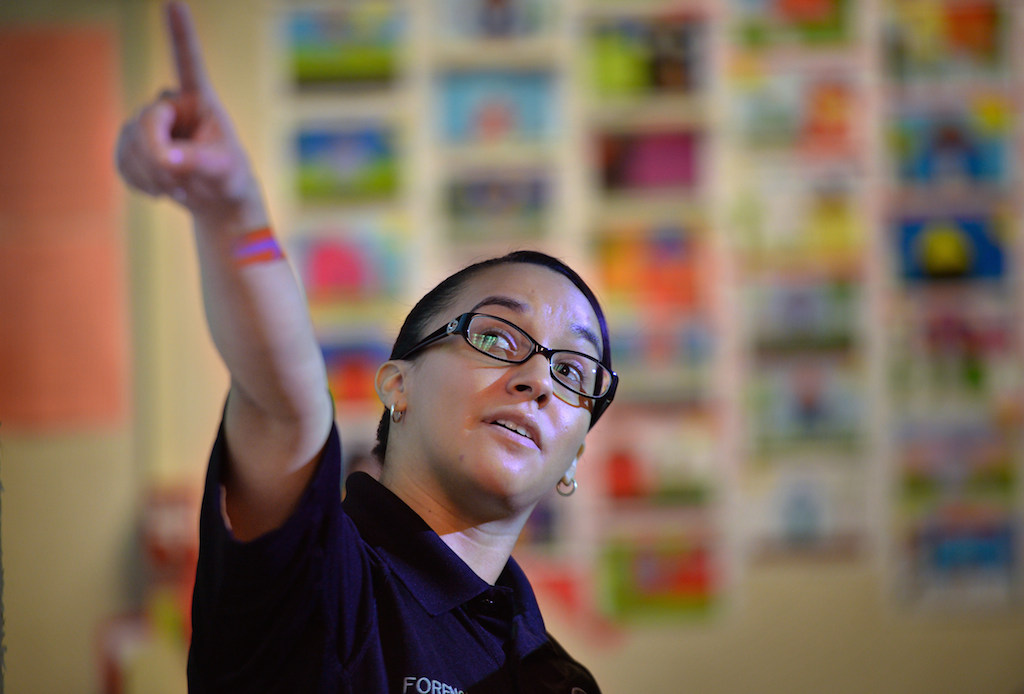
APD Forensic Specialist Jeannette Torres runs through her slide presentation.
Photo by Steven Georges/Behind the Badge OC
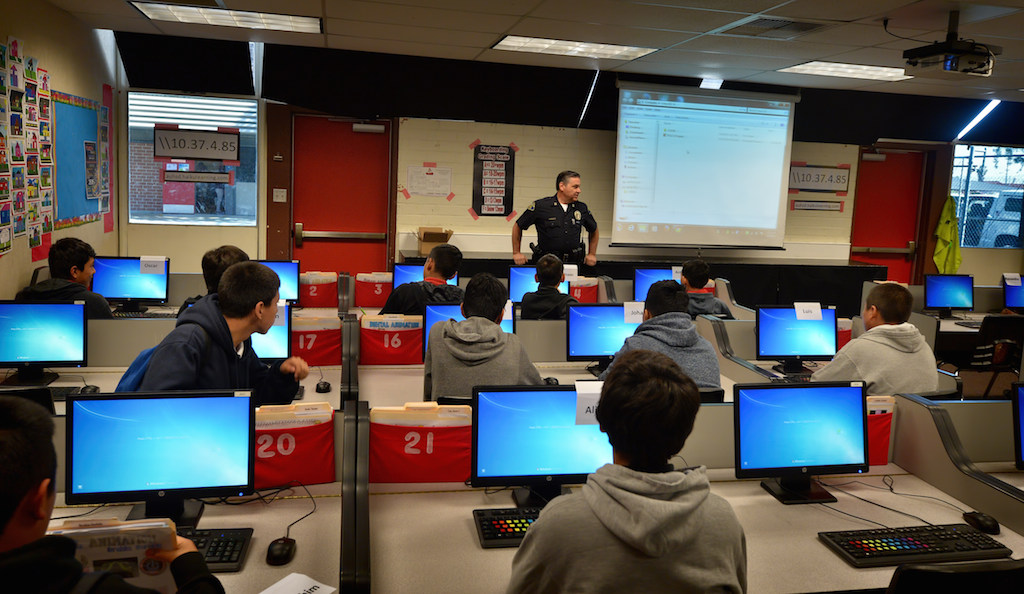
Capt. Ben Hittesdorf of the Anaheim PD talks to kids at Sycamore Junior High as he introduces the forensics team.
Photo by Steven Georges/Behind the Badge OC
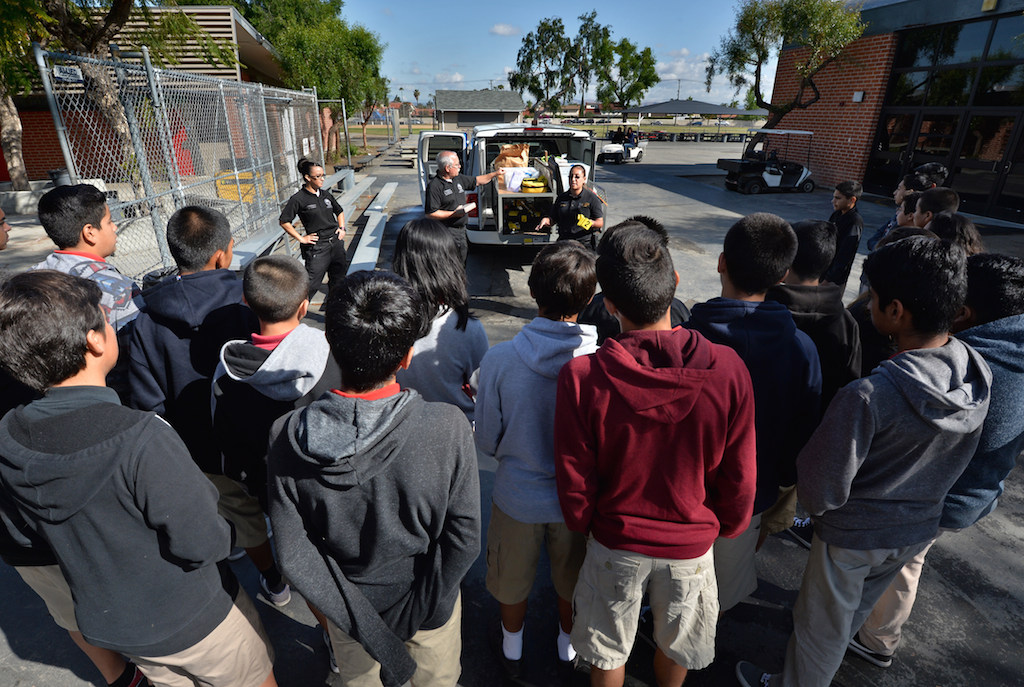
(From left) Anaheim PD Forensic Specialist Jeannette Torres, Forensic Services Detail Supervisor Mark Sveinson and Forensic Specialist Cristy Medina display some of the tools they use at crime scenes.
Photo by Steven Georges/Behind the Badge OC
 Behind the Badge
Behind the Badge



